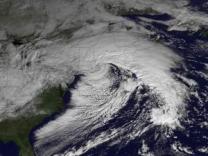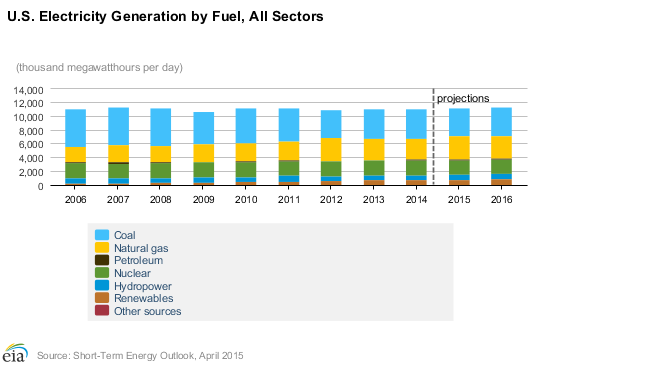US plants show record efficiency in extreme weather conditions
Nuclear power is proving its value and reliability in difficult weather conditions. US nuclear power plants ran at record high efficiency rates in 2014, at 91.7% of capacity, according to data compiled by the Nuclear Energy Institute (NEI).

The Nuclear Energy Institute reviewed the capacity rates of the US' 100 nuclear plants, which produce electricity across 31 states.
The average usage rate in 2014 beats the previous record set in 2007, by a slender one tenth of a percentage point. Nuclear plants generated 798.4 Terawatt hours of electricity last year, the sixth-highest output since NEI records began.
The record total output figure was set in 2010, when 104 reactors produced a colossal 806.9 TWh of electricity while posting a capacity rate of 90.9%.

Maintaining supply during peak demand
According to the NEI, nuclear energy has also proven its worth in extreme weather conditions. This was evident during the heights of the artic blasts that hit the eastern coast in January 2014, with nuclear power plants meeting the demand load at levels that were well above their installed generating capacity.
For example, the NEI revealed that in the fiercely competitive energy markets across the mid-Atlantic region and large portions of the Midwest, the 33 nuclear plants which operate in that region, provided 27% of the region’s early afternoon electricity demand.
This is despite only constituting around 19% of the region’s installed electric generating capacity, proving the nuclear energy sector’s success in difficult conditions.
Duke Energy Carolinas, which operates nuclear plants, said it recorded its highest customer demand ever on February 10, 2015, at 21.1 gigawatt-hours. The previous record was set at 20.8 GWh on Jan. 30, 2014.
The Duke Energy nuclear fleet operated at 100% capacity during the most challenging portion of this February's deep freeze, providing 10.7 gigawatts of electricity.
Promoting Nuclear Plant efficiencies
The US nuclear lobby group, the Nuclear Energy Institute, is promoting the sector’s energy security benefits in extreme weather conditions. One of their advertising campaigns can be seen below.

According to the NEI, The South Texas Project 2 (STP) reactor, located in Bay City 90 miles to the south west of Houston, achieved the highest efficiency rating of 103.7%.
The capacity factor is measured using the summer net rating, which takes into account the impact of hot weather on electrical generation efficiencies.
STP is a two-unit facility, one of the nation’s largest with a combined generating capacity of 2,700MW and is the largest employer in Matagorda County with 1,200 employees.
Additionally, STP also came out on top out of the all of the nuclear plants on electricity generation.
The plant produced 11.63 TWh, just ahead of the Palo Verde 3 plant in Arizona which generated 11.58 TWh.
“This [capacity level] reflects an ongoing focus on equipment reliability at STP,” Buddy Eller, General Manager Corporate Communications and External Affairs, said.
“As a station, we remain focused on safe, reliable operations,” he said.
The Surry unit 1 power station, run by Dominion Energy Company which is part of the Virginia Electric & Power Company, also acheived a high capacity rate of 103.1%. The Three Mile Island was second overall with a capacity rate of 103.6%.
Richard Zuercher, manager of Dominion Energy's nuclear fleet communications, said that in 2012 and 2013, Surry Unit 1 recorded capacity factors od around 93%.
“Several years ago, electrical uprates were performed on both Surry units which increased their net megawatt electrical output,” Zuercher said.
The units are each rated at 838 MW net.
Economic benefits
These nuclear plants bring a large number of economic advantages to both the local communities as well as the wider economy.
“Each of our stations has a major economic benefit on the local economy. The station employs more than 950 highly trained and skilled employees. The average nuclear worker at one of our Virginia stations earns more than $82,000,” Zuercher said.
Dominion Energy has also highlighted the amount of taxes that are paid from the Surry plant. In 2014 Surry Power Station paid roughly $12.5 million in taxes to Surry County.
Overall, the plant operators say that tax revenue from Surry Power Station has provided more than $276.8m to the state treasury over more than 40 years of operation.
Continued expansion
According to the US Energy Information Administration, in 2014 nuclear energy accounted for 19% of the energy base across the country. For the past 30 years nuclear has hovered around the 19% to 20% mark of total energy produced.
This is higher than the share of renewable energy, such as solar and wind power, but coal-fired plants retain the largest share, at 39% of electricity generation.
Natural gas generation holds the second largest share, at 27% of the energy base. Continuing low gas prices have given gas a competitive advantage, but nuclear's high capacity rate in 2014 supports the argument for nuclear to provide reliability alongside growing renewable capacity going forward.
